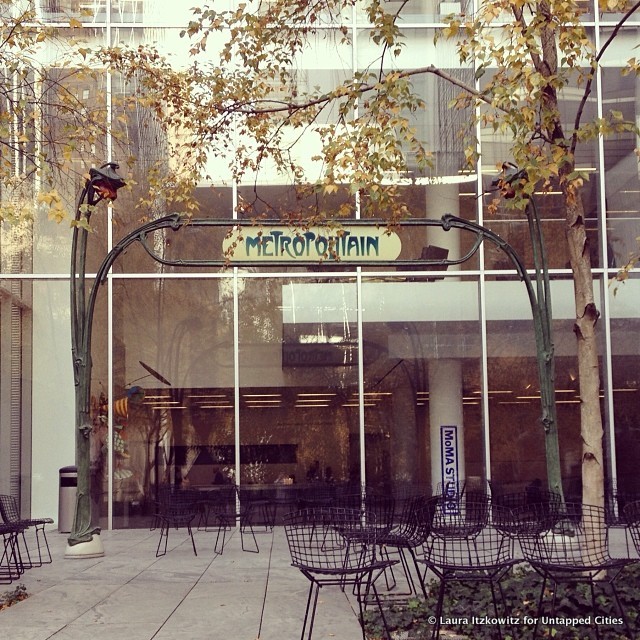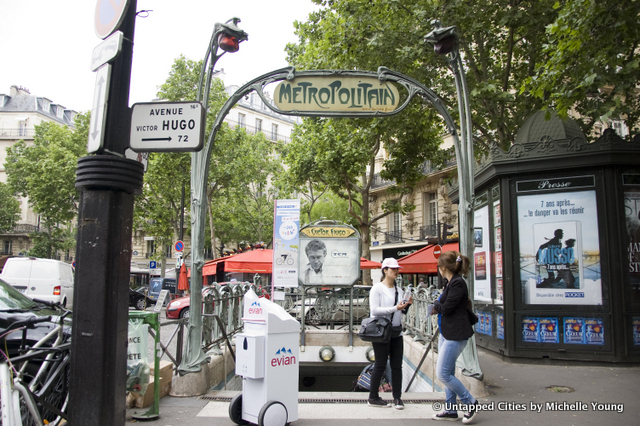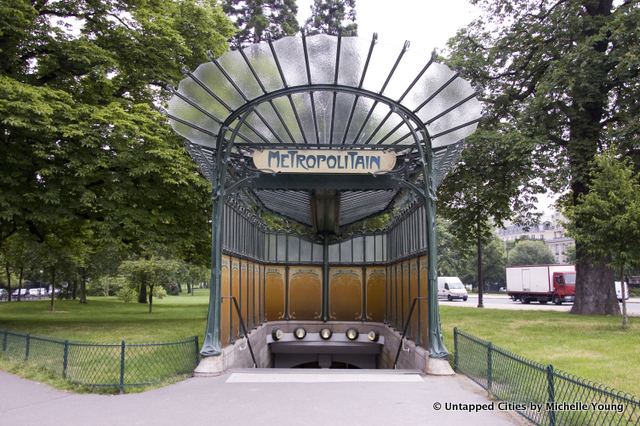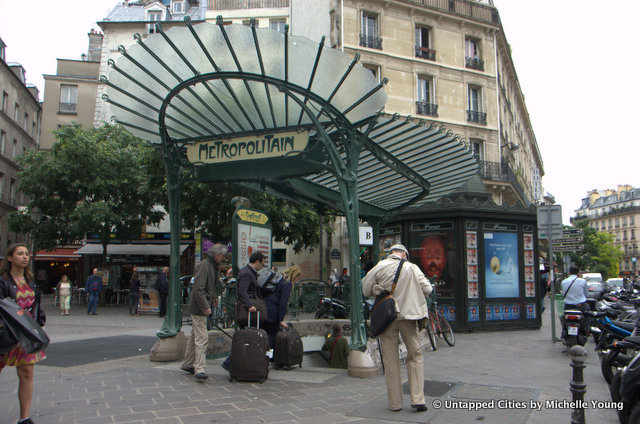
This might make you do a double take. It looks like an entrance to the Paris Metro, but it’s located right in New York City, in the garden of the Museum of Modern Art.
Guimard was an Art Nouveau architect born in 1867 in Lyon, France, and rose to prominence around the turn of the 19th century with the design of apartments in Paris known as Castel Beranger. His legacy, however, lies with the Parisian Metro. Opened in conjunction with the Exposition Universelle of 1900 (the 1900 World’s Fair), Paris’ city planners determined that the subway needed entrances worthy of the City of Light.
Although Charles Garnier advocated for an ornate design, in line with his baroque-style Opera Garnier, Guimard won the commission, despite having never entered the competition. He designed a series of entrances constructed of iron and glass, which could be replicated throughout the system. While some praised them for their modern and modular design, the majority of Parisians were displeased. The tulip-shaped lights were likened to the eyes of monsters, the words “Metropolitan” were criticized for being unreadable.

Between 1900 and 1913, 141 Guimard entrances were constructed. Of those only about 88 are still in existence, including those no longer in Paris. New York City is lucky enough to have one of them, which can be found in the MoMA’s Abby Aldrich Rockefeller Sculpture Garden. It originally graced the entrance to the Bastille Metro stop. Chicago has yet another.
Paris was a little late to appreciate Guimard’s masterpieces. In the 1960s, many of the original entrances were destroyed. It was only in 1978 that the entrances were finally classified as historic landmarks. A historic sign at the Porte Dauphine station reads (translated): “Hector Guimard would not know during his lifetime, the honors he deserved [for the Metro entrances].”
Of the three more elaborate entrance designs, since 1962 none remain of the most ornate which consisted of a small pavilion entrance with a waiting room. Only one remains of the second “dragonfly” design (at Porte Dauphine), and only one glass covered roof entrances remain. Today it can be found at Abbesses in Montmartre — it was moved there in 1970 from Hotel de Ville stop).

Guimard Metro entrance at Porte Dauphine
Since the 1970s, Guimard’s work has become popular once again and Paris realized its mistake in destroying, remodeling, or selling the majority of Guimard’s subway entrances. New molds have been created in the restoration effort in the Guimard design and entrances have been reinstalled in some locations, such as the below at Chatelet.

While Paris does have many more of Guimard’s original entrances than New York, New York does have one edge over Paris. In 1938, Guimard and his wife, Adeline Oppenheim, who was Jewish, emigrated to New York because of rising anti-Semitism in France. In 1942, largely forgotten, Guimard died at the Adams Hotel 2 East 86th Street (alternatively 1049 Fifth Avenue). He is buried at Gate of Heaven Cemetery in Hawthorne, New York.
“Divine entrances to the metro, by grace of which one can descend to the region of the subconscious” –Salvador Dali
Read more from our NYC v. Paris series!





